While the Yucatan Peninsula is full of impressive archaeological sites, it is the very remote ruins of Calakmul in Campeche that are the most stunning ones. Located 60 km deep in the lush green jungle, these remote ruins are one of the best places to visit in Mexico if you love nature and history.
You have to venture off the beaten path to get there, which is why they are only explored by 50 to 70 visitors per day. Therefore, visiting these Maya ruins could not be more different from a trip to Chichen Itza, the Tulum ruins, or even Coba.
The Calakmul ruins are located in the middle of the thick jungle, and as you wander among the structures screams of howler monkeys fill the air – look up and with some luck, you will be able to see them. Thanks to these sounds and the lush green all around you, you will have an immersive experience that is unparalleled by any of the commonly visited archaeological sites.

During the excavation of the biggest structures, some trees were left in place if they do not endanger the structures. This further contributes to the feeling of remoteness and explains why some call it a ‘lost city’. Exploring them feels like a real adventure that is well worth the effort of getting there. So do yourself a favor and add these impressive ruins to your list of places to see in Mexico.
Calakmul has received UNESCO heritage status thanks to its cultural and natural wealth, and once you have been there yourself, you will know why. And do not miss out on climbing the second highest known Mayan pyramid while you are there – you’ll be able to spot Guatemala in the distance.
This post may contain affiliate links, which means I may receive a commission, at no extra cost to you if you make a purchase through a link. Please see the full disclosure for further information.
At a Glance: Calakmul Ruins
Best Place to Stay: Hotel Xpujil or Hotel Casa Marán
Getting there: rent a car or bus to Xpujil + a guided tour
About the Ruins of Calakmul
Calakmul is located in the northern Petén Basin region in the southern Mayan lowlands and was as important as Tikal across the border in Guatemala. In fact, the two cities were contemporaries and fought for regional hegemony.
The ruins were named by Cyrus L. Lundell, the first Westerner to see the site in 1931 when he flew over the area. He named the site Calakmul, Mayan for ‘City of Two Adjacent Hills’, based on the two large tree-covered structures that are now known as structure I and structure II. ‘Ca’ is Mayan for two, ‘lak’ means adjacent and ‘mul’ is the word for an artificial hill or pyramid.
The original name of the city was Ox Te’ Tuun (‘Three Stones’). During the classical period, Calakmul was also referred to as Kaan, the ‘Kingdom of the Snake’. This is due to the fact that the Kaan, a powerful dynasty of the Late Classic Period, had its seat in the city.
During this time, Calakmul’s snake emblem glyph was distributed over a wide area, which indicates that the Kingdom governed areas up to 150 km away. The city’s emblem glyph had a wider distribution than glyphs of any other Maya city.
While the entire area has a size of over 70 km², currently only 2 km² of the archeological site are open to the public. There are over 6000 structures and residential buildings have been found in a 20 km² large area around the site core.
At its peak, the entire kingdom of Calakmul had a land size of 13.000 km² and included 20 secondary cities including La Muñeca, Naachtun, Uxul, Oxpemul, and Sasilha. According to some estimates, 200.000 people lived in the secondary centers and a total of 1.7 million in the entire kingdom. The city of Calakmul itself once had 50.000 citizens.

Remains of dozens of other ancient Maya settlements have been re-discovered in the area. Sacbés (interconnecting roads) are proof of the fact that they had close ties to Calakmul. These roads were part of the city’s extensive trade network and enabled the exchange of ideas with neighboring regions.
Some parts were temporarily closed to the public when I visited Calakmul. These temporary closures alongside some permanent restrictions are due to ongoing excavations or consolidations. After all, large parts of this Maya city are still covered by the jungle which means there are many more mounds that hide ancient structures. Take a moment to imagine what amazing secrets this city is still hiding when you visit it.
History of Calakmul
The early history of Calakmul is not clear, but it is assumed that the city could have inherited its position of power from El Mirador or Nakbe. The city dates back to the Middle Pre-Classic period and was inhabited from 500 BC.
Calakmul formed a regional coalition with Caracol and La Corona. This helped Calakmul become the leading city of one of the two political blocks in the Mayan Lowlands and turned Tikal into a rival for hegemony over the southern lowlands. While similar in size, Calakmul had a greater density than Tikal.

In 556 AD, Tikal attacked Calakmul’s ally Caracol and was subsequently defeated by Calakmul. Given that there were no new monuments with inscriptions in Tikal for 130 years after the defeat, it is known that Calakmul gained the sole regional hegemony.
Between 636 AD and 695 AD, Calakmul had reached a sociopolitical network of incomparable outreach.
In 695 AD, it was defeated in battle by Tikal, and it is assumed that it suffered another loss in battle in 741 AD. These defeats alongside those of its allies lead to the end of Calakmul’s hegemony. Its size diminished after being defeated by Tikal.
The city never recovered from this defeat although it maintained some of its influence. A period of political reorientation occurred as Calakmul focused northwards. It took on the northern traditions of the Rio Bec region to benefit from the region’s prosperity.
The last date recorded in inscriptions is 909 AD (stelae 61). The last known mention of the city outside of Calakmul dates back to 849 AD and was found in El Ceibal (Seibal) in Guatemala. The city was fully abandoned around 1000 AD.
During the Postclassic period, there were ritual activities by occasional pilgrims. Effigy offerings found were dated from 1200 AD to 1450 AD.

The first Westerner saw the ruins in 1931 and the excavation of the ruins began in 1984.
How long did Calakmul last?
Calakmul was inhabited from 500 BC to 1000 AD when the city experienced a dramatic downfall and was almost left completely abandoned. Therefore, it was continuously occupied for 1500 years, which makes it a prime example of the formation and development of cultural groups.
Why was Calakmul abandoned?
Like many other Mayan cities of the southern lowlands, Calakmul started to diminish in size during the time of the Classic Maya collapse. It was abandoned around 1000 AD.
The reasons for this widespread collapse of Maya cities are not known, but current theories include a long drought, epidemic diseases, the collapse of the trade routes, and a foreign invasion.
Calakmul Ruins Entry Fee
The Calakmul entry fee is split into three parts and has to be paid in three parts at two separate ticket offices. First, you have to pay the EJIDO & CONAM fees to enter the biosphere reserve, and then you have to pay the INAH (National Institute of Anthropology and History) ruin entry fee.

In total, you have to pay 250 pesos (approximately 12 USD) to visit these remote Calakmul ruins in Campeche. In May 2022, the individual fees of Calakmul were as follows:
– EJIDO ( access local land): 68 pesos
– CONAM (enter protected area): 97 pesos
– INAH (ruin entry fee): 85 pesos
The combined entry fee of this hidden gem in Mexico is more than acceptable when you consider how vast the archeological site of Calakmul is. Even more so, if you compare the fee to that of Chichen Itza or the much smaller Ek Balam.
Opening Hours
While the Calakmul ruins are open Monday to Sunday from 8 AM to 5 PM, the area after the fee wristband checkpoint can only be entered from 6 AM to 2 PM. The last access to the Calakmul archeological site is at 4 PM, but if you want to make the most of your visit, I recommend arriving no later than 1 PM.
If you love taking photos, I recommend planning to be back at the Gran Plaza around 4:30 PM as that is when the golden hour paints the structures in a beautiful light. Just keep an eye on the clock, as you are supposed to have left the archeological site by 5 PM and still have to walk back from the Gran Plaza to the exit.
How much time do you need to visit the ruins?
How much time you need to explore the Calakmul ruins depends on three factors: which route you choose, if you want to climb the pyramids and how many photos you want to take.
Generally speaking, you should plan to spend at least three to four hours at the archeological site, but if you are a passionate photographer that wants to see everything the Calakmul ruins have to offer and take your time to enjoy the view from the top of the ruins, you could easily spend seven hours or more there.
Calakmul Routes
Corto (short) → Gran Plaza, structure I & II, Grupo Noreste, Unidad Residencial Chan Chi ich
Media (medium) → short route, Acrópolis Chiik Nahb & parts of Gran Acropolis (structure X, Plaza Sur, Plaza del Jaguar, Juego del Pelota)
Largo (long) → This route includes all areas that are open to the public. The total distance is 5.6 km.

Best Time to visit the Calakmul Ruins
The Calakmul ruins are worth a visit throughout the year, but the cooler months tend to be more enjoyable. Generally speaking, the weather in the area is classified as warm sub-humid. Between May and September, the weather in the region is very hot, which makes them the least ideal months to visit the ruins.
Timewise, it is best to go early to avoid the heat of the day. Access to the archeological site is limited to a maximum of 100 visitors at a time, so this vast area will never be overrun. Given that this archeological site usually sees between 50 to 70 visitors per day, you do not have to worry that you’ll have to wait for someone to leave before you can enter.
If you want to see the wildlife of the biosphere reserve, you should keep in mind that the animals are most active in the morning and in the evening. Plan your trip to include either morning or evening for the best experience.
How to get to Calakmul
Given the remote location of the Calakmul ruins, getting there is not straightforward and requires some planning. It requires getting to the town of Xpujil in Campeche and then driving another two hours to get to the ruins, which means that it cannot be done as a day trip from Tulum or even Cancun. If you want to explore the Calakmul archeological site, you will have to spend a night in Xpujil.

Having said that, I want to make it clear that a lot of information on how to get to Calakmul is incorrect and based on old information. Some things like a shuttle bus from Xpujil to Calakmul are no longer available, and based on what the local tourism office said, there are currently no plans to reintroduce said shuttle service.
This leaves you with two options once you have made it to Xpujil, and I will provide all the necessary information down below.
Calakmul Day Trip from Bacalar
It is possible to join a day tour from Bacalar to Calakmul, but given the long distances the tour bus will drive each way, I only recommend it if you are incredibly short on time. The area around Calakmul and Xpujil is full of amazing spots, and if you only do a day trip you will undeniably miss out.
Book a Day Trip from Bacalar to Calakmul
Public Transport to Xpujil + Guided Tour to Calakmul
Getting to Xpujil
There is a direct bus from Tulum to Xpujil that departs late on Monday and arrives on Tuesday at 2:40 AM. This bus ride takes 5:45 hours, but it is not ideal as it only runs once a week. Therefore, the best option is to catch a bus to Chetumal and then from Chetumal to Xpujil.
There are frequent connections from Cancun, Tulum, Playa del Carmen and Bacalar to Chetumal. Once there, you then have to catch the bus from Chetumal to Xpujil. This route is served by both ADO and AU buses and takes around 1:45 h. However, you should know that the connection is not run every single that, and that there is no obvious rule concerning which days the route is served. Therefore, you should look up the Chetumal to Xpujil bus schedule ahead of time. I recommend booking a ticket in advance.
Getting from Xpujil to the ruins
If you are traveling by public transport, your best option is to join a guided tour from Xpujil to Calakmul. These tours usually cost between 1.600 and 1.700 pesos per person, which a minimum of two participants.
Joining a tour will allow you to explore the Calakmul ruins with a naturalist or archeological guide. It is best to do so in advance if you do not speak Spanish. Reach out to the visitor center via email at visitcalakmul@gmail.com.

Alternatively, you could technically also take a taxi, but given that the driver would have to wait hours while you explore the ruins, this option is expensive. There is no fixed price, so you have to negotiate and hope to get a good price.
How to get to Calakmul with a Rental Car
If you have a driver’s license and do not mind driving in Mexico, it is best to rent a car in Cancun, Tulum, or Playa del Carmen and drive to the ruins of Calakmul. Hereby, you will find the best rental car prices in Playa del Carmen. Due to the road conditions on route to Calakmul, it is best not to get a small and low car.
While you could technically also rent a car in Xpujil, doing so is not advised unless you rent the car ahead of time. There are few rental cars are available, and quite often none of them are available for spontaneous day rentals, so you have to reserve a car in advance. The price for a one-day rental in Xpujil is around 1500 pesos (approx. 73 USD).
The driving time from Playa del Carmen to Xpujil is around 4:30 hours (398 km), and the driving time from Campeche City is 3:45 hours (299 km). If you arrive early enough, you can use the remainder of the day to explore one of the other archeological sites in the area. I personally recommend visiting Becan, which is located 8 km outside of the town.
Driving from Xpujil to Calakmul
Spend the night in Xpujil at one of the hotels listed below, and then make your way towards the Calakmul Biosphere Reserve. Plan to arrive just as it opens to maximize the time you have to explore the area and the archeological site. If you use Google Maps as a navigation tool, you should ensure that you do not select the Calakmul tag west of El Refugio. The ruins are south of La Selva and this is the correct location.
Do not forget to fill up your rental car’s tank before you drive to Calakmul!
The distance is 56 km (34.8 miles) and it takes 37 minutes to drive from Xpujil to Entronque de Calakmul. To get to the entry of the biosphere reserve in which the ruins are located, you have to follow road 186, which connects Chetumal and Villahermosa.
I personally call it the “butterfly tunnel of death” as we hit 21 butterflies on way there. Beautiful blue birds tend to sweep down to the street to pick up the butterflies that have been hit by cars

The road between the entrance gate and the museum is 20 km long and has a speed limit of 60 km/h. They will check your bracelets at a checkpoint at the museum and take note of your license plate.
The following 40 km have a speed limit of 30 km/h and it is best to abide by it as there is a lot of wildlife. As you drive slowly, you can spot animals including ocellated turkeys, and if you are really lucky maybe even a jaguar. We saw seven ocellated turkeys on way there and just under twenty on the way back.
There will likely be some bigger trees on the road as well as holes. The last 8 km of road to Calakmul are the worst and the reason why a higher car is best as there are a lot of holes of varying sizes.
Free parking is available on site. There are plenty of trees around the parking area, so you do not have to worry about your car heating up while you explore the archeological site.
Calakmul Biosphere Reserve
The Calakmul Biosphere Reserve was established in 1989, although it initially was a Natural Protected Area. It covers 15% of the state of Campeche and has the highest diversity of mammals in the Mayan region. Research has shown that the Maya water reserves had a lasting impact on the local flora and fauna.
1600 different plants have been found inside the area, and 282 bird species, including several tucan species and parakeets, call the biosphere reserve their home.
Two of Mexico’s three primate species live in the biosphere reserve, alongside two of the four edentates. Additionally, five of six wildcat species can be found in the area. Other animals living in the area include tapirs, armadillos, and mule deer. There are also around 50 reptile species and more than 400 butterfly species.
This abundance of wildlife was also reflected by the ancient Maya in the form of paintings, sculptures, and pottery.


Jaguars in Calakmul
While some guides like to say that ‘they just saw one last week’, it is actually a very rare occurrence and you have to be extremely lucky to see one of the 500 jaguars in the Calakmul Biosphere Reserve. One guide has not seen one in 12 years of frequently visiting the archeological site. Given those numbers, I had no real expectations of seeing a jaguar while visiting Calakmul.
While driving away from the ruins, I joked that a jaguar should show up on the road right in front of us. And I clearly remember my friend’s sarcastic “do you want it to do a backflip too”. And then, just like that, it happened.
We saw a jaguar on the road less than 100 meters ahead of us. And while it did not do a backflip, it stayed on the road for more than half a minute before jumping up 2 meters at the side of the road.
It was an incredible experience and I still cannot believe my good luck!

Want to see my jaguar encounter video? Watch it here.
I stopped the car and grabbed my phone to snap some photos and record the jaguar encounter. And let me tell you that said video and photos were necessary as no one we talked to could believe we had actually been that lucky before seeing the videos.
While it is highly unlikely that you will be fortunate enough to see a jaguar, my experience is proof of the fact that it is not impossible. Abide the speed limit as you drive down the road in the biosphere reserve and keep your eyes open to spot the diverse wildlife in the area. After all, you never know what you will see.
Having said that: given that jaguars are nocturnal animals, the chances to see one do increase later in the evening. Therefore, you have the greatest chance to see one if you leave the ruins just as they close at 5 PM and then drive down the biosphere reserve road as the sun sets.
Facilities at the Archeological Site
The only bathroom and toilets are located near the ticket booth. There are no vendors that try to push you to buy something, in fact, there are no shops for around 60 km.
There is an area with information boards near the entrance, but currently, all signs are only in Spanish. I tried to compile all the important facts in this location guide, so you won’t miss out if you are not fluent in Spanish. All other information panels at the Calakmul ruins are in English, Mayan, and Spanish.
Calakmul Museum of Nature and Archeology
The Museo de Naturaleza y Arqueologá is on route to the Calakmul ruins and houses some artifacts of the archeological site alongside some reconstructions. It is open from 8 AM to 3 PM and is a great place to visit if you want to learn more about the geological, archeological, and natural history of the ruins and the wider area.
Highlights of the Calakmul Archeological Site
The city of Calakmul was built on a limestone area that was flattened by the Maya. Over the course of 1500 years, the Maya built monumental temples that were erected to sustain a permanent relationship and dialogue with the Gods through ceremonies and public administration buildings where ceremonies and trade were organized. Many of the pyramids got bigger as they were extended and built upon. Structures I, II, and VII are the highest structures.
Many of the bigger structures also incorporate the tombs of kings and other nobles. Said tombs also contained body ornaments and accompanying objects such as jade masks, ear spools, polychrome pottery, and necklaces made of jadeite or marine snails. The most famous jade mask of Calakmul can now be observed in a museum in Campeche City.
Calakmul also has defense systems, stucco friezes, and mural paintings, as well as eight sacbe that connected Calakmul to Mayan cities like El Mirador and El Tintal. Surprisingly, the was little structural construction in the center during Calakmul’s time of greatest prosperity. However, many stelae at the Gran Plaza date back to this period.
As a result of its history, the archeological site shows cultural influences from the north and south. The monumental buildings in the core area were built in the Petén-style, which mirrors the growth of social complexity during the pre-classic and early classic periods.
Elements of the Rio Bec-style can be found in the northeastern area. These additions are a late Classic development and stand in relation to the Kaan dynasty’s relocation from Dzibanché to Calakmul.

I recommend taking a photo of the map as the paths are not always clear. There are no paper maps, so a photo is the only option. It is also a good idea to download a local offline map in Google Maps, so you can cross-reference the two.
Gran Plaza
The Gran Plaza is a 250×150 meters large area that is surrounded by structures II, IV, V, VI, and VII. Structure V and some stairs divide the Gran Plaza of Calakmul into two sections. It is oriented towards structure II and was a place of ceremonial and political events.
It is the area with the signs of the earliest occupation around 400 BC. The structures were built upon even after the city had been defeated by Tikal as seen in the Rio Bec-style upper building of structure V. The structures are houses and tombs, and some of the best-preserved stelae. Said stelae tell the history of the events between 623 and 672 AD and can be found in front of structure V. Be sure to climb structure VII for a great view of structure II.



Structure II
Structure II is 45 meters high and aside from a great view of the lush jungle, it also grants that who climb it an impressive view of structures I and VII. Until recently, structure II was considered the largest Mayan pyramid, but in fact, it is only the second tallest known Mayan pyramid after the Toniná Pyramid in Chiapas.
It is located south of the Gran Plaza and its base is 140 meters long. The highest part you can see while standing at its base is not the highest point. To reach it, you have to climb the pyramid until you reach the last segments of steps, and then walk to the left. From there, you will see the highest area that was once topped by a temple.
Between the 5th century BC and the 8th century AC, the structure was built upon 7 times. While not accessible to the public, this structure is the location of a 20x4m large stucco frieze. It was found on an old pyramid inside the structure and depicts a mix of a human and an animal. As of now, nine tombs have been found, including that of the great ruler Yuknoom Yich’aak K’ahk (‘Jaguar Paw Smoke’). His grave has been recreated in the Museum of San Miguel in Campeche City.



Structure III
Structure III is located near the Gran Plaza and you walk past it on the way to structure I. It consists of twelve rooms atop a raised platform and is considered to be the residential structure of one family.
The structure dates back to the 5th century AD and contains the tomb of a male ruler. When excavated, the tomb was full of offerings including three jade mosaic masks that were positioned over the ruler’s body.

Structure I
Calakmul’s structure I was built on an 8 meters high hill, which makes it appear higher than structure II. However, it is 5 meters smaller with a height of 40 meters. Climb to the top and enjoy the view over the trees.
The pyramid as you see it today was built in the second half of the 8th century AD, but its substructure dates back to 150 BC to 150 AD. The stela at the base was erected by ruler Yuknoom Took’ K’awill in 731 AD. Today, the surface of some of the stelae is smooth, as parts have been stolen.

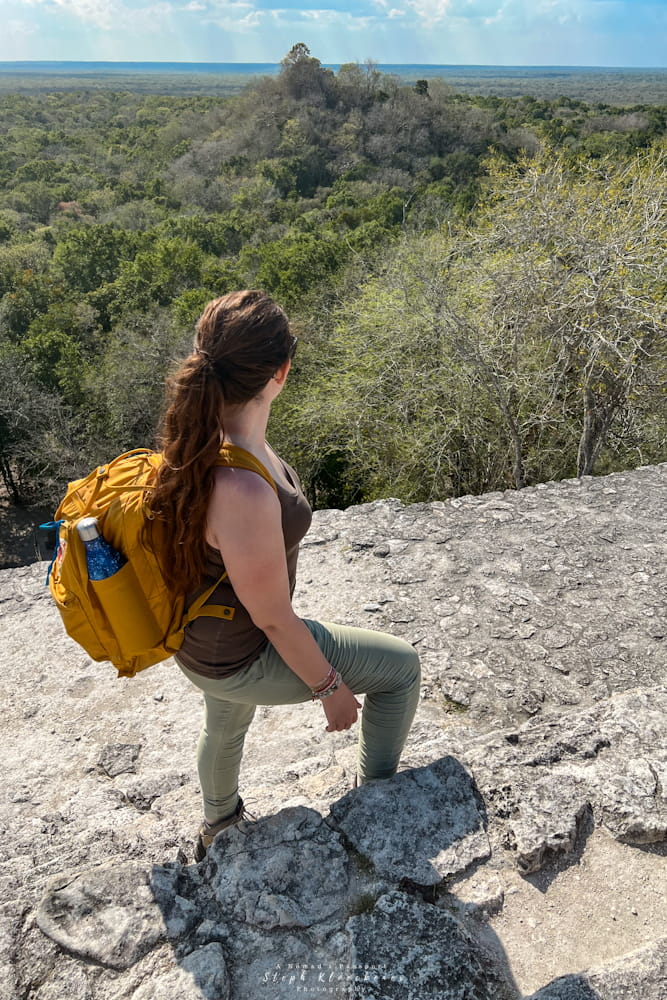

Further Areas of the Calakmul Ruins
Rules
If you want to explore the ruins of Calakmul, you have to follow these rules that are in place to ensure the conservation of the structures and the environment.
- Do not litter.
- Under no circumstances destroy the ruins by etching your name or anything else into them.
- Do not climb onto the roofs of structures as this might cause them to collapse.
- Do not sit on fragile structures.
- Do not take anything with you when you leave.
- Do not try to enter the internal areas of the pyramids.
- Do not bring your pets.
- Do not ride a bike on-site.

Is it allowed to climb the pyramids of Calakmul?
It is allowed to climb many of the pyramids of Calakmul. Just know, that there are no ropes that help you climb up and down and that the steps are rather uneven. Therefore, stable footwear is highly recommended.
Do not climb them, if you have a fear of heights or if you often get dizzy. Even the best view is not worth the risk of falling down – especially when falling has an elevated risk of a lethal injury.
Where to stay near Calakmul
If you want to explore the remote ruins of Calakmul, it is best to book your accommodation in Xpujil, as it is the nearest town. While you could only spend one night in town, I personally recommend booking two nights. This way, you can have an early start on the day of your visit and can maximize your time at the ruins without having to worry about driving in the dark to the location of your next accommodation.
While in town, I decided to stay in two different hotels, and I can recommend both of them. While Hotel Casa Marán looks more luxurious, it is located on the main street. Meanwhile, Hotel Xpujil is on a side street and has a pool, but has a more rustic style.
If you are feeling adventurous and book in advance, you can also camp at Campamento Yaax Che en Calakmul. Tents and proper mattresses are provided.
What to bring when visiting Calakmul
Snacks & water – While they do sell a limited selection of snacks at the entrance of the biosphere reserve, it is best to buy everything you need in Xpujil. It is not possible to buy any water or snacks once you have entered the biosphere reserve, so bring a sufficient amount. I recommend leaving an additional liter of water per person in the car while you explore the Calakmul ruins.
Money for the entry fee – There are no ATMs at the archeological site, so ensure you have enough cash on you before you start driving there. There are no banks in Xpujil, only two ATMs. If you are looking for a bank, you’d have to drive all the way to Chetumal or Escáega.

Camera – Be sure to bring your camera. After all, Calakmul is one of the most spectacular places in Mexico, so you’ll want the chance to take photos.
Cap – Wear a hat or a cap to avoid sunstroke.
Insect repellent – Bringing some is especially important if you are visiting the site during the summer months.
Sunscreen – Biodegradable sunscreen is a must if you want to avoid getting sunburned while climbing the pyramids.
FAQ
What is Calakmul known for?
The ruins of Calakmul are known for their remote location as well as archeological findings that have contributed to our understanding of the Mayan society.
Thanks to the hieroglyphic on the stelae and walls, scholars were able to understand more about the ancient Maya culture, its organization, and its political history.
Is Calakmul worth visiting?
The ruins of Calakmul are an impressive sight and are also surrounded by a lush jungle full of endangered animals. This combination makes a visit to Calakmul more than worthwhile for everyone that loves ruins, history, nature, and those with an interest in exploring remote locations.
What jungle is Calakmul in?
Calakmul is located inside the Calakmul Biosphere Reserve and is part of the area that has the second largest biodiversity in Mesoamerica.
Why is Calakmul a UNESCO World Heritage Site?
The Ancient Maya City and the Protected Tropical Forests of Calakmul were inscribed on the list of UNESCO World Heritage Sites in 2002 for numerous reasons.
For one, the city held an important rule in the region for over twelve centuries, and it has well-preserved structures, that allow visitors a glimpse of life in an ancient Maya capital. It is also located in the Mesoamerican biodiversity hotspot, the third largest one in the world.
The pyramids and structures are a masterpiece of human creative genius and are an outstanding example of a very specific type of architecture. Thanks to the stelae and friezes, Calakmul is considered a unique and exceptional testimony of cultural traditions and exhibits an important interchange of human values.
Meanwhile, the surrounding biosphere reserve is an outstanding example of ongoing ecological and biological processes in the evolution of ecosystems and communities of flora and fauna. It contains the most important and significant natural habitats for the in-site conservation of regional biological diversity.

Nearby Places to visit
If you want to see more Maya ruins, you are in the ideal area, as it is part of the Archeological Route. Consider visiting some of the other nearby ruins before or after you explore Calakmul so you can compare the sites to each other and see how they differ.
Becán Ruins — These ruins are only 8 km away from the hotels and more than worth a visit. After all, Becan used to be the political, economical, and religious center of the Rio Bec region. Additionally, it has a unique feature as the main area of the settlement is surrounded by a wide moat. This makes it a unique site you should not miss while exploring the area.
Volcan de Los Murcielagos (‘Volcano of the Bats’) → Just before sunset, 2 million bats of different species emerge from a cave in what looks like an erupting volcano. The entire spectacle last around 90 minutes.
Xpujil Ruins — If you do not want a long drive and see more local ruins, you can also visit the ruins in the western area of the town of Xpujil. The towers of the Xpujil archeological site are rather interesting and well worth a visit.
Hormiguero Ruins — While the road to these ruins is rather bumpy, there is no entry fee. The Hormiguero ruins are the place to visit if you want to see a very detailed depiction of the Earth Monster.
Planning a trip?
Check out these useful websites and resources I use to plan my own adventures.
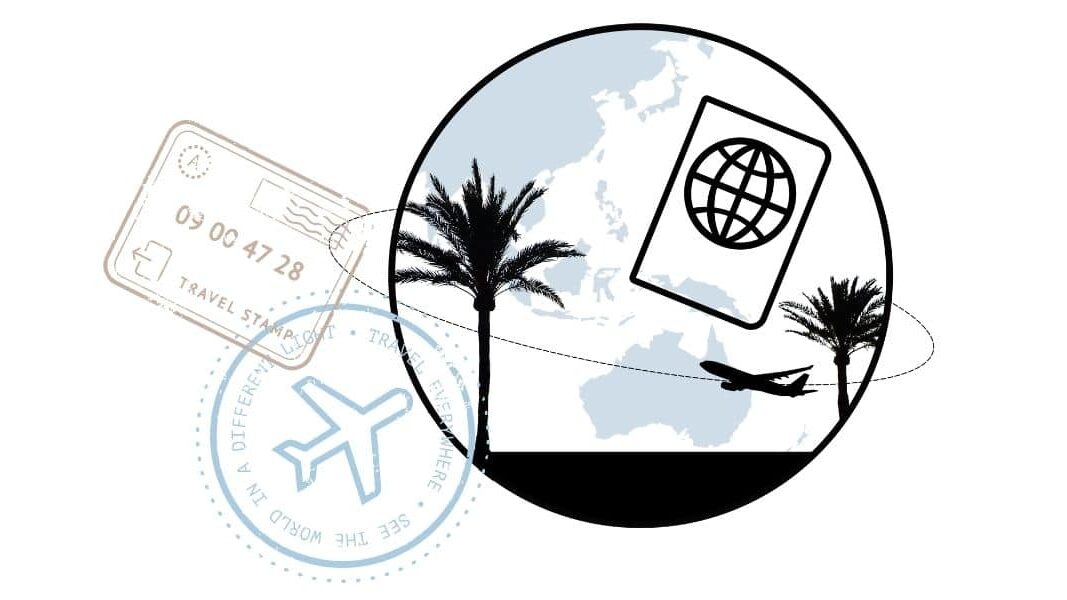
Roundup: Ruins of Calakmul
I personally consider visiting the Calakmul ruins a must if you are interested in Maya history and love nature. While a trip to the area is certainly a detour away from common tourist spots, it offers plenty of worthwhile sights aside from Calakmul.
While I only spend two days and two nights in the area, I ultimately would have preferred to have at least a week. After all, a week is the minimum amount of time you need to see most ruins and locations of cultural and natural significance.
Based on that, I am definitely planning another trip to Calakmul and the wider area. Until then, I can only encourage every single one of you to include Calakmul in your Yucatan itinerary and to spend more time in the area than I did.
More about Mexico
If you are planning a trip to Mexico, you might also be interested in these guides:
Yucatán Peninsula Itinerary
Mexico’s Pueblos Magicos
Which Maya Ruins in Mexico do you want to explore first?
Let me know in the comments down below!
Planning to visit the Calakmul Ruins?
Pin This guide to plan your trip to Calakmul!






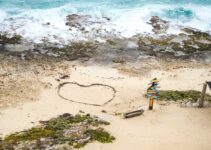
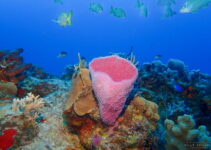
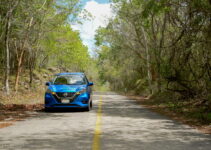

Wow! I cannot believe you saw a jaguar and in such plain sight! That’s awesome.
It sure was an amazing experience. Did not think it would actually happen while joking about seeing one.